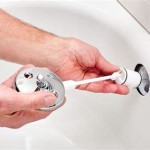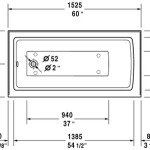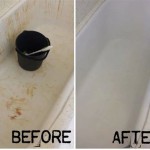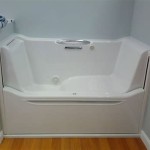Is It Easy To Replace a Bathtub Faucet? A Comprehensive Guide
Replacing a bathtub faucet is a common home maintenance task that many homeowners consider undertaking themselves. While the apparent simplicity of the faucet might suggest a straightforward process, the actual difficulty can vary significantly depending on several factors. These factors include the type of faucet, the accessibility of the plumbing, the age of the existing fixtures, and the homeowner’s level of plumbing experience. This article provides a detailed overview of the considerations involved in replacing a bathtub faucet, exploring both the potential ease and the potential challenges.
Before embarking on a bathtub faucet replacement project, it is crucial to accurately assess one's own skills and comfort level with plumbing repairs. A minor error in plumbing can lead to leaks, water damage, and potentially costly repairs. Therefore, a thorough understanding of the required steps and potential pitfalls is essential. Understanding the different types of bathtub faucets and the necessary tools is the foundation for determining the project's feasibility.
Understanding the Different Types of Bathtub Faucets
Bathtub faucets come in a variety of styles, each with its own installation requirements. The most common types include:
1. Wall-Mounted Faucets: These faucets are directly attached to the wall above the bathtub. They typically involve connecting to water supply pipes within the wall cavity. Replacing a wall-mounted faucet often requires accessing the plumbing from behind the wall, which may necessitate cutting into drywall or another wall surface.
2. Deck-Mounted Faucets: These faucets are installed directly onto the deck (or surround) of the bathtub. This type is often easier to access than wall-mounted faucets, as the connections are typically visible beneath the deck. However, accessing the connections might require removing an access panel or working in a confined space.
3. Roman Tub Faucets: Similar to deck-mounted faucets, Roman tub faucets are also installed on the bathtub deck. They often feature separate handles for hot and cold water and may include a separate hand shower. Their installation generally parallels that of deck-mounted faucets, but can be more complex due to the multiple components.
4. Tub and Shower Faucets: These faucets combine the functionality of a bathtub faucet and a showerhead. They usually include a diverter valve that allows the user to switch between the tub spout and the showerhead. Replacing this type of faucet can be slightly more intricate due to the additional components and connections involved.
Identifying the specific type of faucet is the first step toward understanding the scope of the replacement project. Each type presents unique challenges and requires specific tools and techniques.
Assessing the Plumbing and Accessibility
The condition of the existing plumbing and the ease of access to the water supply lines are crucial determinants of the project's difficulty. Several potential challenges could arise:
1. Corroded Pipes: Older homes often have galvanized steel pipes that are prone to corrosion. Attempting to disconnect a corroded pipe can lead to breakage or further damage to the plumbing system. In such cases, professional assistance is highly recommended.
2. Tight or Stuck Connections: Over time, fittings and connections can become tightly sealed due to mineral buildup or corrosion. Applying excessive force to loosen these connections can damage the pipes or fittings, potentially leading to leaks. Special penetrating oils or heat may be necessary to loosen stubborn connections.
3. Limited Access: Accessing the plumbing behind the bathtub or under the deck can be challenging, especially in older homes where space is limited. Working in confined spaces requires patience and specialized tools, such as basin wrenches or pipe wrenches with extended handles.
4. Incompatible Fittings: The existing plumbing may not be compatible with the new faucet. Different pipe sizes or thread types may require the use of adapters or couplings to ensure a secure and leak-proof connection. It is essential to identify the correct fittings and ensure they are properly installed. Improperly sized or installed fittings can result in leaks or even damage to the new faucet.
5. Shut-Off Valves: Locating and accessing the shut-off valves for the bathtub is crucial. If the house lacks individual shut-off valves for the bathtub, the main water supply to the entire house must be turned off, which can be inconvenient. Older shut-off valves can become corroded or fail to close completely, requiring replacement or repair before beginning the faucet replacement.
A careful inspection of the plumbing and accessibility will reveal potential obstacles and allow for proper planning and preparation. It is far better to anticipate potential problems than to encounter them unexpectedly during the project.
Tools and Materials Required for the Project
Having the right tools and materials on hand is essential for a successful bathtub faucet replacement. The specific tools needed will depend on the type of faucet being replaced and the condition of the existing plumbing. A general list of necessary tools and materials includes:
1. Adjustable Wrench: Used to loosen and tighten nuts and fittings of varying sizes. Having multiple sizes of adjustable wrenches is beneficial.
2. Pipe Wrench: Designed for gripping and turning pipes. A pipe wrench is essential for working with older plumbing.
3. Basin Wrench: A specialized wrench designed for accessing nuts and fittings in hard-to-reach places, such as under a bathtub deck.
4. Screwdrivers: Both flathead and Phillips head screwdrivers are necessary for removing screws and securing faucet components.
5. Plumber's Tape (Teflon Tape): Used to create a watertight seal on threaded connections.
6. Plumber's Putty: Used to seal around the base of the faucet to prevent water from seeping behind it.
7. Penetrating Oil: Used to loosen corroded or stuck connections.
8. Towels or Rags: Used to clean up spills and protect surfaces.
9. Bucket: Used to catch any water that may leak out during the replacement process.
10. Safety Glasses: To protect your eyes from debris.
11. Work Gloves: To protect your hands.
In addition to these tools, you will also need the new bathtub faucet and any necessary adapters or fittings. It is always a good idea to have extra supplies on hand in case unforeseen problems arise.
Step-by-Step Guide to Replacing a Bathtub Faucet
The specific steps involved in replacing a bathtub faucet will vary depending on the type of faucet and the existing plumbing. However, the following general steps can be adapted to most situations:
1. Turn Off the Water Supply: Locate and turn off the water supply to the bathtub. If there are individual shut-off valves for the bathtub, turn them off. Otherwise, turn off the main water supply to the house.
2. Remove the Old Faucet: Carefully disconnect the old faucet from the water supply lines. Use the appropriate wrenches to loosen the connections. Be prepared for some water to spill out. If the connections are corroded or stuck, use penetrating oil and allow it to soak for a few minutes before attempting to loosen them.
3. Clean the Area: Clean the area around the faucet opening to remove any old putty, caulk, or debris. This will ensure a smooth and watertight seal for the new faucet.
4. Install the New Faucet: Follow the manufacturer's instructions to install the new faucet. Apply plumber's tape to all threaded connections to create a watertight seal. Use plumber's putty around the base of the faucet to prevent water from seeping behind it.
5. Connect the Water Supply Lines: Connect the water supply lines to the new faucet, ensuring that the hot and cold water lines are connected correctly. Tighten the connections securely, but be careful not to overtighten them, as this can damage the fittings.
6. Turn On the Water Supply: Slowly turn on the water supply and check for leaks. If any leaks are detected, tighten the connections further or reapply plumber's tape or putty.
7. Test the Faucet: Test the faucet to ensure that it is functioning properly. Check the water temperature and flow rate. Also, check the diverter valve (if applicable) to ensure that it switches between the tub spout and the showerhead correctly.
Potential Challenges and When to Call a Professional
While replacing a bathtub faucet can be a relatively straightforward project, several potential challenges can arise that may require the assistance of a professional plumber:
1. Severe Corrosion: If the existing plumbing is severely corroded, attempting to disconnect the fittings can damage the pipes and lead to leaks. A professional plumber has the tools and expertise to safely remove corroded pipes and fittings.
2. Difficult Access: If the plumbing is difficult to access, working in confined spaces can be challenging and time-consuming. A professional plumber has the experience and specialized tools to work in tight spaces.
3. Leaks: If you are unable to stop leaks after replacing the faucet, it is important to call a professional plumber. Leaks can cause water damage and mold growth if left untreated.
4. Lack of Experience: If you are not comfortable working with plumbing, it is best to call a professional plumber. A minor error in plumbing can lead to costly repairs.
5. Code Violations: Plumbing codes vary by location. A professional plumber is familiar with local codes and can ensure that the faucet is installed correctly and in compliance with all applicable regulations.
In general, if you encounter any difficulties or are unsure about any aspect of the faucet replacement process, it is always best to err on the side of caution and call a professional plumber.
In conclusion, while replacing a bathtub faucet might appear simple, the ease truly depends on several factors. A thorough assessment of plumbing, faucet type, tool availability and knowledge is crucial. If in doubt, consulting a professional ensures a safe and proper installation.

How To Fix A Leaking Bathtub Faucet Diy Family Handyman

Plumbing How To Replace A Jacuzzi Bathtub Faucet Home Improvement Stack Exchange

How To Change A Bathtub Faucet 14 Steps With Pictures Wikihow

How To Replace A Mobile Home Bathtub Faucet

Replacing A Tub Spout An Easy Repair Job Theworldlink Com

How To Replace A Bathtub Faucet

How To Change A Bathtub Faucet 14 Steps With Pictures Wikihow

Bathtub Spout With Diverter Replacement Fix Leaking Tub Jonny Diy

How To Replace A Bathtub Faucet Beginner S Guide

Replacing A Tub Faucet Bathtub Spout Replacement
Related Posts








